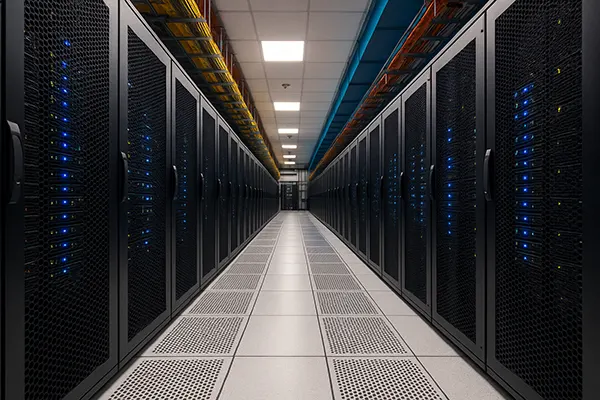EuroHPC: Europe’s Muscle for Supercomputing Autonomy

In recent years, Europe has made significant strides in the field of supercomputing, seeking not only to compete with global leaders such as the United States and China but also to build its own technological autonomy. At the heart of this ambition lies EuroHPC, a joint initiative designed to create a world-class European supercomputing ecosystem. By 2025, this network is not only strengthening Europe’s scientific research but also fuelling industrial innovation, digital sovereignty, and sustainable development.
The Foundations of EuroHPC
The European High Performance Computing Joint Undertaking (EuroHPC JU) was established in 2018 as a collaborative framework between the European Union, its member states, and private partners. Its primary goal is to develop, deploy, and maintain a high-performance computing infrastructure accessible to European researchers and businesses. Unlike fragmented national projects of the past, EuroHPC integrates resources into a unified network that serves the whole continent.
By 2025, EuroHPC oversees some of the most powerful machines in the world, including Leonardo in Italy, LUMI in Finland, and MareNostrum 5 in Spain. Each system has been designed not only for raw computational speed but also for energy efficiency and scalability. These supercomputers provide exascale-level performance, allowing them to process problems at a scale once thought impossible.
Beyond infrastructure, EuroHPC supports research centres and fosters collaboration across scientific fields. From climate modelling to personalised medicine, its mission is to ensure that Europe can tackle complex problems with its own technological resources while reducing dependency on foreign systems.
Strategic Importance for Europe
The strategic value of EuroHPC lies in sovereignty. In an era where data security and computational power define geopolitical influence, Europe cannot afford to rely solely on non-European providers. The network ensures that critical data—from defence simulations to medical research—remains under European control.
Another key aspect is competitiveness. High-performance computing is vital for industries such as aerospace, automotive design, and pharmaceuticals. By making supercomputing resources accessible, EuroHPC strengthens Europe’s ability to innovate and commercialise new technologies. This helps maintain Europe’s role as a global leader in advanced manufacturing and scientific breakthroughs.
Finally, EuroHPC contributes to Europe’s digital transformation strategy, bridging the gap between academic research and industrial applications. Its funding programmes ensure that both large corporations and small enterprises benefit from cutting-edge computational resources.
Applications of EuroHPC Supercomputing
EuroHPC supercomputers are designed for diverse applications across multiple domains. In environmental sciences, they enable advanced climate models that forecast extreme weather patterns with unprecedented accuracy. This information is essential for creating resilient infrastructures and developing policies that address climate change effectively.
In healthcare, EuroHPC accelerates progress in genomics and drug discovery. By analysing vast datasets, supercomputers can identify patterns in human DNA, predict disease risks, and simulate drug interactions in ways that dramatically shorten development cycles. This not only supports personalised medicine but also enhances Europe’s preparedness against pandemics.
In the field of artificial intelligence, EuroHPC machines provide the processing power needed to train large models on European datasets. This ensures that Europe maintains independence in AI development while also addressing concerns over data privacy and ethical use.
Industrial and Economic Benefits
Industries ranging from energy to finance depend on predictive modelling, simulation, and big data analysis. With EuroHPC, companies have the capacity to optimise production processes, reduce costs, and develop safer products. For instance, automotive manufacturers use supercomputing to simulate crash tests digitally, significantly cutting down on physical prototypes and environmental impact.
Start-ups and SMEs also gain access to resources that were once exclusive to global corporations. Through EuroHPC’s open access model, smaller players can compete on an equal footing, stimulating innovation across sectors. This democratisation of computing power fosters a more dynamic and competitive European economy.
Additionally, EuroHPC strengthens cross-border cooperation. Shared projects between universities, industries, and governments encourage knowledge transfer, ensuring that Europe benefits collectively from its supercomputing infrastructure.

Future of EuroHPC and Global Competition
By 2025, EuroHPC has set its sights on achieving full exascale computing capabilities, with projects already underway to deploy machines capable of performing one quintillion calculations per second. These advancements will position Europe alongside the United States and China, narrowing the technological gap and solidifying its influence in global digital affairs.
Equally important is sustainability. EuroHPC invests heavily in green computing, designing systems that run on renewable energy and use advanced cooling techniques to minimise carbon footprints. This aligns with the European Green Deal and demonstrates that technological growth can coexist with environmental responsibility.
Looking ahead, EuroHPC aims to deepen integration with quantum computing research. While quantum machines are still experimental, their combination with high-performance computing holds the potential to revolutionise areas such as cryptography, logistics, and material science.
Challenges and Opportunities Ahead
Despite its progress, EuroHPC faces challenges. Building and maintaining such advanced infrastructure requires substantial investment and long-term political commitment. Moreover, attracting and training skilled specialists in high-performance computing remains a priority for Europe to fully harness its capabilities.
Competition with global powers is another concern. While EuroHPC narrows the gap, the United States and China continue to pour immense resources into their supercomputing initiatives. To remain competitive, Europe must not only sustain funding but also encourage innovation at every level of its ecosystem.
Nonetheless, EuroHPC represents a transformative opportunity. By fostering collaboration, ensuring sovereignty, and promoting sustainable growth, Europe’s supercomputing network has become a cornerstone of digital autonomy. As research challenges grow more complex, EuroHPC ensures that Europe will face them with resilience and independence.


